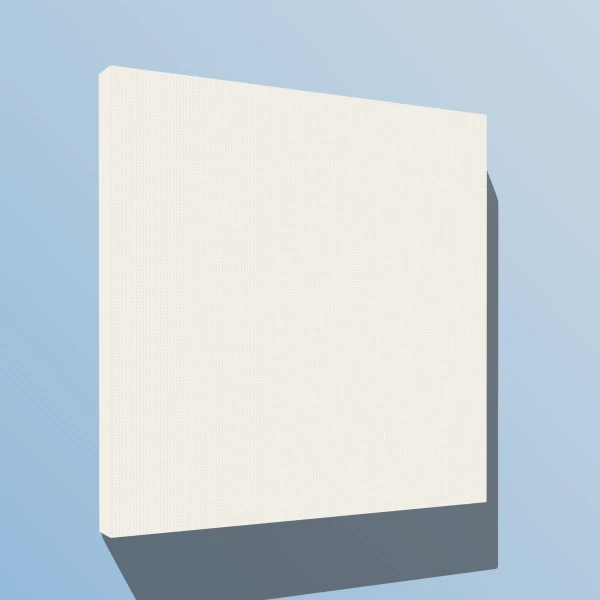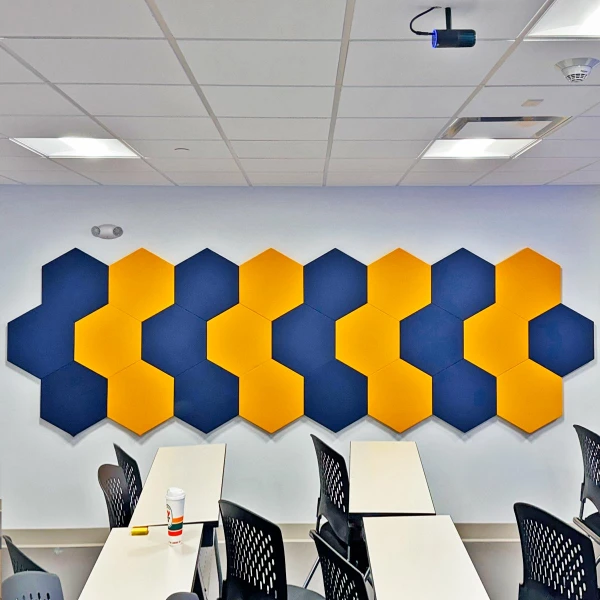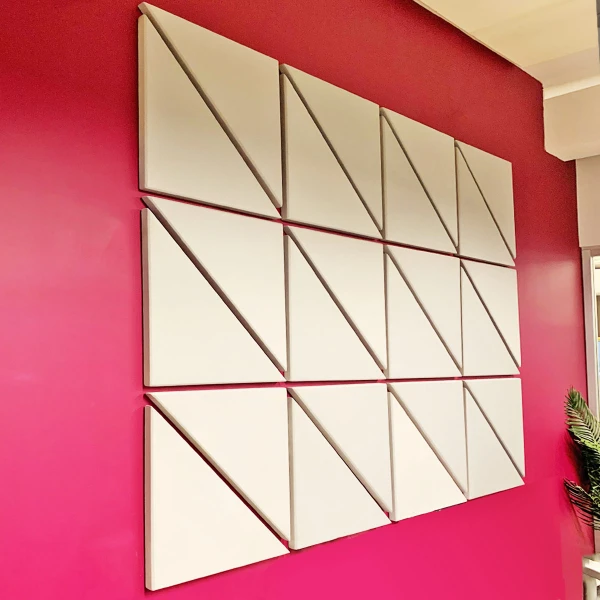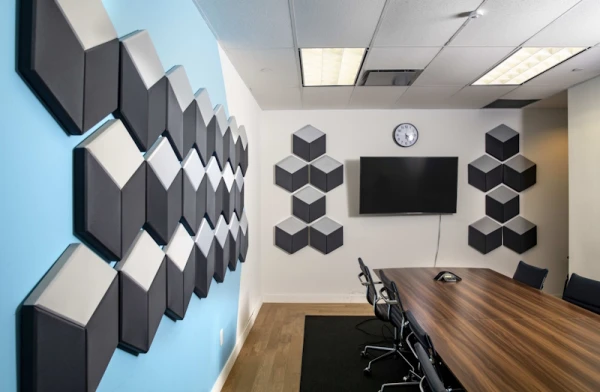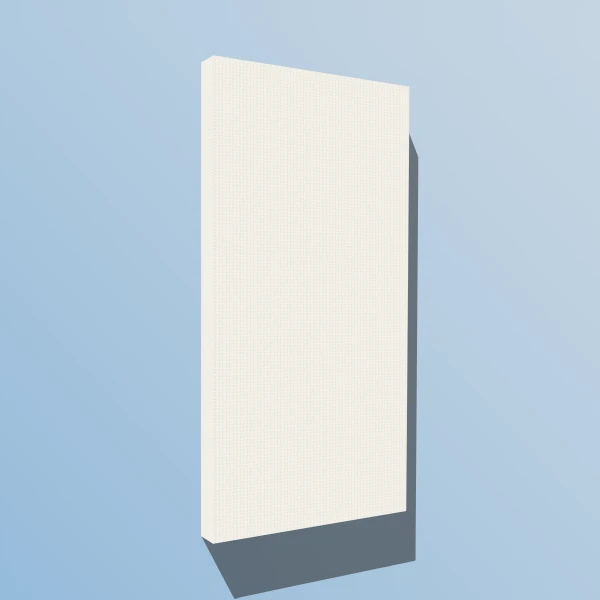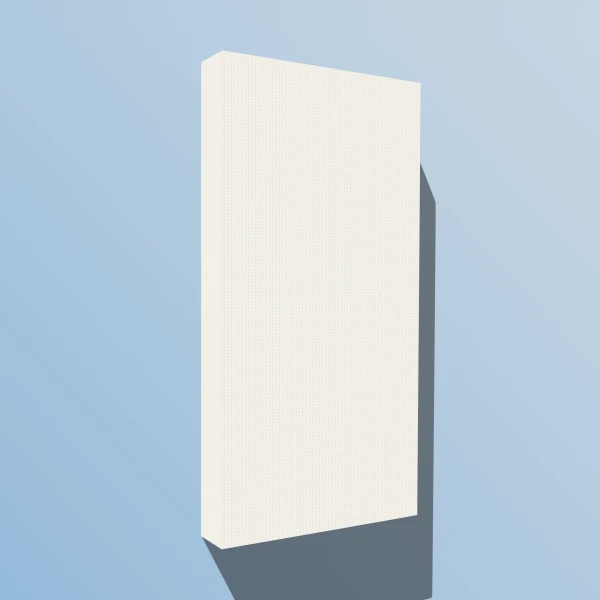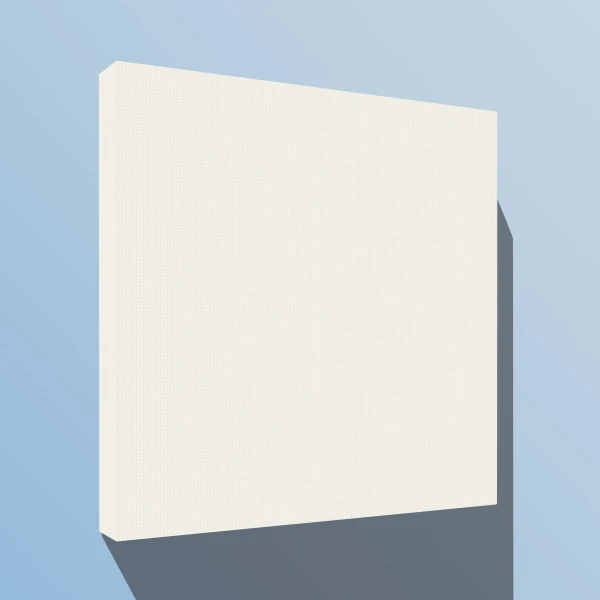White Acoustic Panels
$48.00
$105.00
$48.00
$85.00
$87.00
$55.00
$79.00
$81.00
$113.00
$48.00
$53.00
$60.00
White acoustic panels are a versatile choice for a wide variety of interiors. They are perfect for use in a number of different residential, commercial and professional environments, providing sound absorption and visual appeal.ts, providing sound absorption and visual appeal.
One of the biggest advantages of white acoustic panels is their timeless aesthetic. Unlike panels with bold colors or patterns, white ones blend easily with minimalist, modern and classic interiors.
Versatility is another key benefit. White acoustic panels work well as a neutral backdrop, blending easily with a variety of design elements such as wood accents, glass walls or metal finishes. They are able to fit into both contemporary and traditional spaces making them the preferred choice for architects and interior designers.
Beyond aesthetics, these panels also offer light-reflective properties, which help enhance natural and artificial lighting. White surfaces can brighten the room in spaces with limited light, creating a more open and inviting atmosphere. This makes them especially beneficial in offices, commercial spaces, and home workspaces.
For commercial environments, white acoustic panels contribute to a professional and sophisticated impression. Used in corporate boardrooms, workspaces or hospitality facilities, they create a more comfortable atmosphere for employees and customers.
Types of White Acoustic Wall Panels
White acoustic wall panels are available in a variety of materials and designs, each providing unique benefits. Used in offices, home theaters, commercial spaces or recording studios, these panels effectively control noise levels while looking stylish.
White acoustical panels with fabric sheathing are one of the most popular options for sound absorption. These panels have a sound-absorbing core, usually made of fiberglass or foam, covered with durable white fabric. Their sleek appearance makes them ideal for conference rooms, classrooms, and home offices where both acoustics and aesthetics are important.
White fabric-clad acoustical panels are one of the most popular options for high performance sound absorption. These panels have a sound-absorbing core, usually made of fiberglass or foam, covered with durable white fabric. They are suitable for conference rooms, auditoriums and home offices.
For a more architectural look, perforated white acoustic wall panels provide a balance of sound absorption and diffusion. These panels, often made from MDF or metal, feature a series of small perforations that allow sound waves to pass through and be absorbed by an acoustic backing. They are commonly used in commercial buildings, music venues, and auditoriums.
Diffuser panels are another type of white acoustic panel designed to scatter sound waves evenly rather than absorb them completely. They help prevent dead spots in a room and improve sound clarity, making them particularly useful in music studios, theaters, and high-end home entertainment spaces.
For those looking for cost-effective and lightweight solutions, foam-based white acoustic panels provide excellent mid-to-high frequency absorption. Made from open-cell polyurethane or melamine foam, these panels are easy to install and work well in home studios, small offices, and personal workspaces.
For a more customized approach, custom-printed white acoustic panels allow logos, patterns, or artwork to be printed onto the panel’s surface while maintaining its sound-absorbing properties. These panels are ideal for corporate offices, branded environments, and creative spaces where sound control and design customization go hand in hand.
Each white acoustic wall panel type offers a unique combination of functionality and style, allowing users to create visually appealing and acoustically optimized spaces suited to their specific needs.
Performance Factors of Acoustic Panels White
To achieve optimum sound absorption, it is essential to know the characteristics of white acoustic panels. NRC rating, thickness, density and material composition determine how effectively these panels improve sound quality.
The Noise Reduction Coefficient (NRC) is one of the most important metrics for evaluating acoustic panels white. This rating, measured on a scale from 0.00 to 1.00, indicates how much sound a panel absorbs. White acoustic panels with an NRC of 0.70 or higher reduce echo and reverberation, making them ideal for conference rooms, auditoriums, and open-plan offices. Lower NRC ratings may be sufficient for basic noise control, while panels with NRC values close to 1.00 offer superior absorption for professional recording studios and high-performance acoustic environments.
Beyond absorption, some acoustic panels white are designed to provide sound diffusion rather than absorption. Diffuser panels scatter sound waves evenly, helping to create balanced acoustics without over-dampening a room. These are particularly useful in music studios, concert halls, and high-end entertainment spaces, where maintaining a natural sound is essential.
Thickness plays a significant role in determining the effectiveness of white acoustic panels. Panels ranging from 1 to 2 inches thick are sufficient for controlling mid-to-high frequencies, making them ideal for offices and general-purpose acoustic treatment. Thicker panels, 3 inches or more, are more effective at absorbing lower frequencies, making them better suited for home theaters, recording studios, and spaces with deep bass sounds.
Material density also impacts acoustic performance. Denser materials, such as fiberglass or compressed polyester, provide superior sound absorption compared to lightweight foam alternatives. While foam panels are budget-friendly and effective for high-frequency noise, high-density fabric-wrapped fiberglass panels or wood-backed solutions offer long-lasting durability and better overall acoustic performance.
By considering NRC ratings, absorption vs. diffusion needs, thickness, and material density, choosing the right white acoustic panels ensures optimal sound control and a sleek, modern aesthetic in any space.
FAQs
Frequently Asked Questions. Here are some common questions about Acoustic panels.
How do I clean and maintain white acoustic panels?
- Fabric-wrapped panels – Vacuum regularly or spot-clean with mild detergent.
- Foam panels – Dust with a soft cloth or vacuum attachment.
- Wood or perforated panels – Wipe with a dry or slightly damp cloth to prevent dust buildup.
Can white acoustic wall panels be customized?
Yes! Many white acoustic panels come in textures, patterns, and custom-printed designs to match interior aesthetics while maintaining sound-absorbing properties.
Do white acoustic panels provide full soundproofing?
No, acoustic panels white are designed for sound absorption rather than full soundproofing. Additional materials like mass-loaded vinyl (MLV) or soundproof drywall are needed to block sound from entering or leaving a room.
How thick should white acoustic panels be for effective noise control?
- 1 to 2 inches – Effective for mid-to-high frequency absorption, great for offices and general use.
- 3 inches or more – Better for low-frequency absorption, ideal for home theaters and music studios.
What materials are used in white acoustic panels?
Common materials include:
- Fabric-wrapped fiberglass – High NRC, premium design, great for offices and auditoriums.
- Foam-based panels – Lightweight and budget-friendly, ideal for home studios.
- Perforated MDF or wood panels – Aesthetic and functional, balancing absorption and diffusion.
- Recycled PET felt – Eco-friendly and durable, available in different textures and densities.
How effective are acoustic panels white at reducing noise?
The effectiveness of white acoustic panels is measured by their Noise Reduction Coefficient (NRC). Panels with an NRC of 0.70 or higher provide excellent sound absorption, reducing noise levels and improving speech clarity.
Where can white acoustic panels be used?
These panels are ideal for offices, conference rooms, home theaters, recording studios, restaurants, and open-plan workspaces. Their neutral color and clean aesthetic make them perfect for modern and minimalist interiors.
What are white acoustic panels, and how do they work?
White acoustic panels are sound-absorbing panels designed to reduce echo, control noise, and improve acoustics in various spaces. They work by absorbing sound waves, preventing them from bouncing off walls and ceilings, which helps create a quieter and more comfortable environment.
Where can I buy high-quality white acoustic panels?
Premium white acoustic panels are available at Sound ProSolutions in a variety of materials, styles, and installation options.
Still have questions? Contact us for expert advice on choosing the best acoustic solution for your space!

